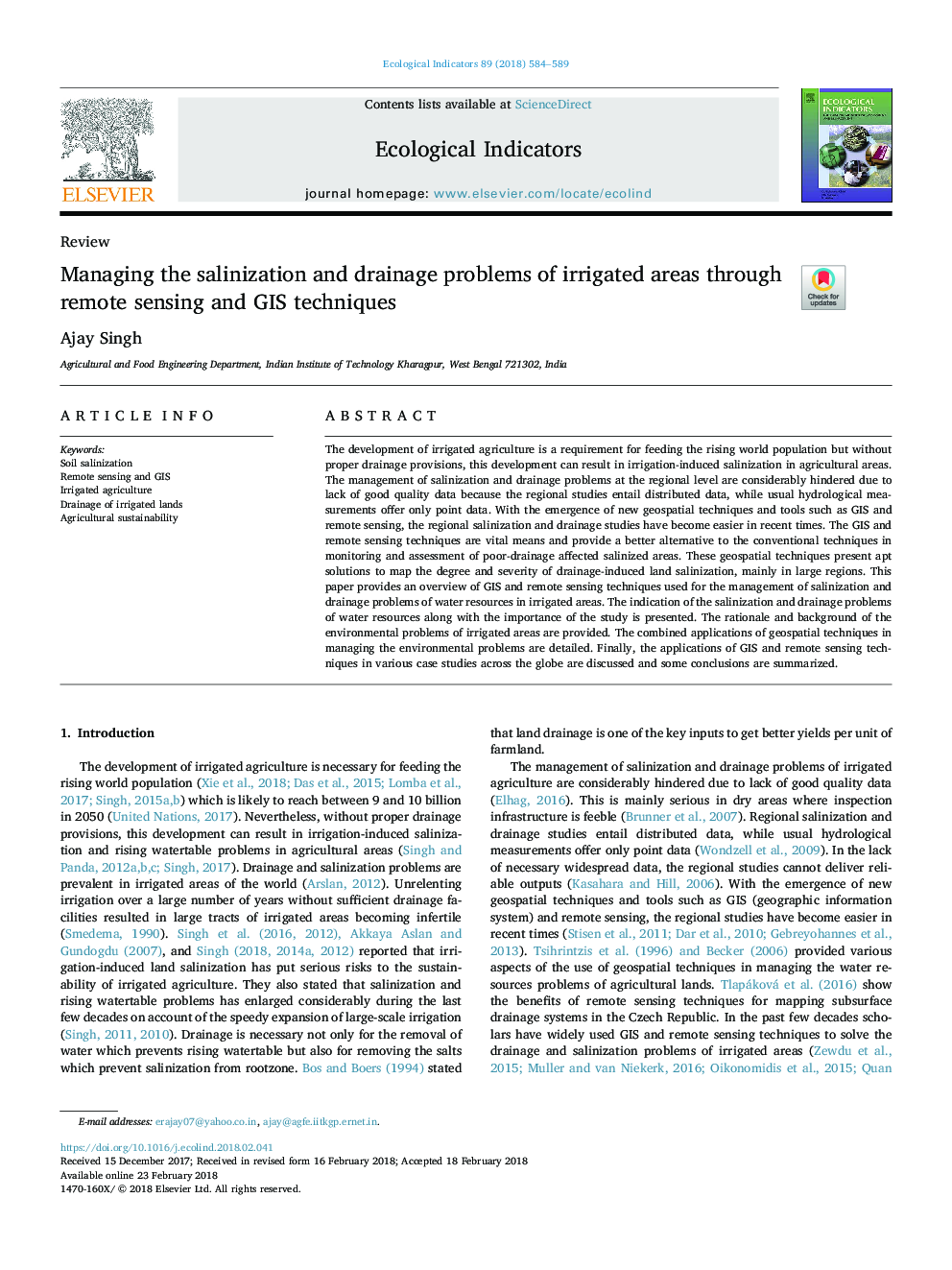| Article ID | Journal | Published Year | Pages | File Type |
|---|---|---|---|---|
| 8845510 | Ecological Indicators | 2018 | 6 Pages |
Abstract
The development of irrigated agriculture is a requirement for feeding the rising world population but without proper drainage provisions, this development can result in irrigation-induced salinization in agricultural areas. The management of salinization and drainage problems at the regional level are considerably hindered due to lack of good quality data because the regional studies entail distributed data, while usual hydrological measurements offer only point data. With the emergence of new geospatial techniques and tools such as GIS and remote sensing, the regional salinization and drainage studies have become easier in recent times. The GIS and remote sensing techniques are vital means and provide a better alternative to the conventional techniques in monitoring and assessment of poor-drainage affected salinized areas. These geospatial techniques present apt solutions to map the degree and severity of drainage-induced land salinization, mainly in large regions. This paper provides an overview of GIS and remote sensing techniques used for the management of salinization and drainage problems of water resources in irrigated areas. The indication of the salinization and drainage problems of water resources along with the importance of the study is presented. The rationale and background of the environmental problems of irrigated areas are provided. The combined applications of geospatial techniques in managing the environmental problems are detailed. Finally, the applications of GIS and remote sensing techniques in various case studies across the globe are discussed and some conclusions are summarized.
Related Topics
Life Sciences
Agricultural and Biological Sciences
Ecology, Evolution, Behavior and Systematics
Authors
Ajay Singh,
